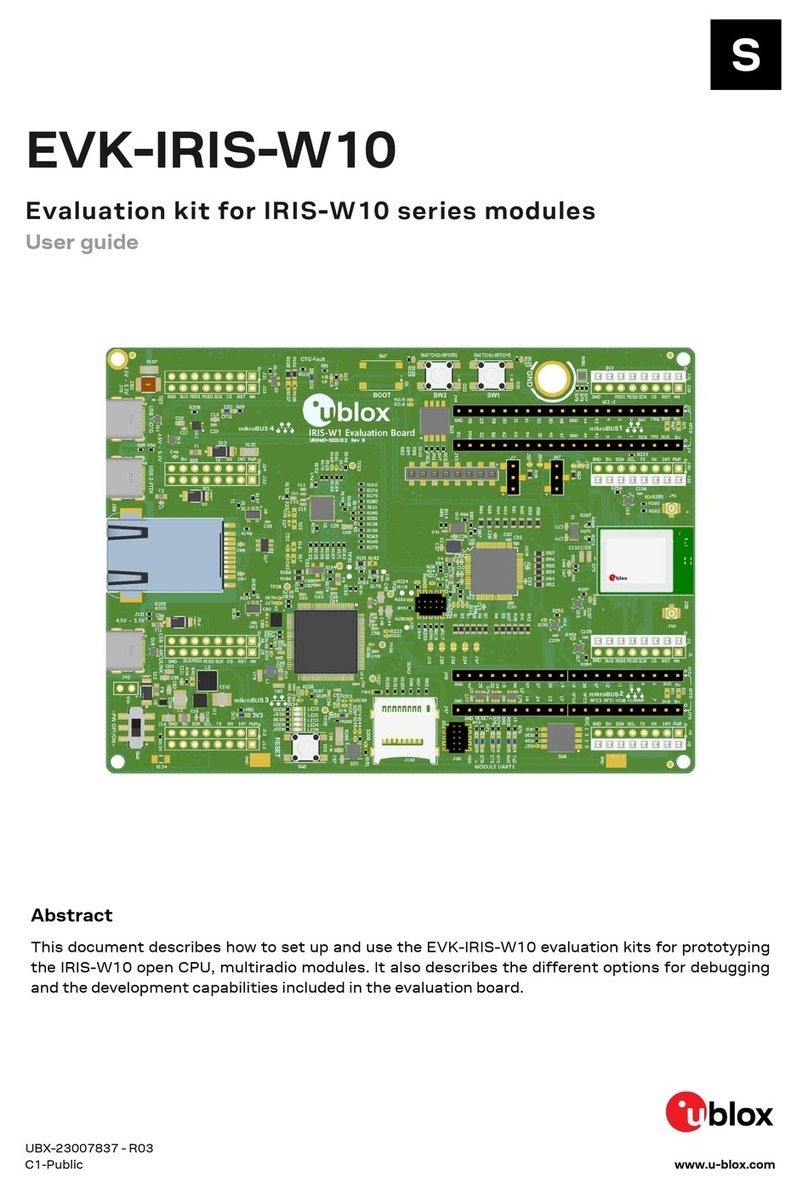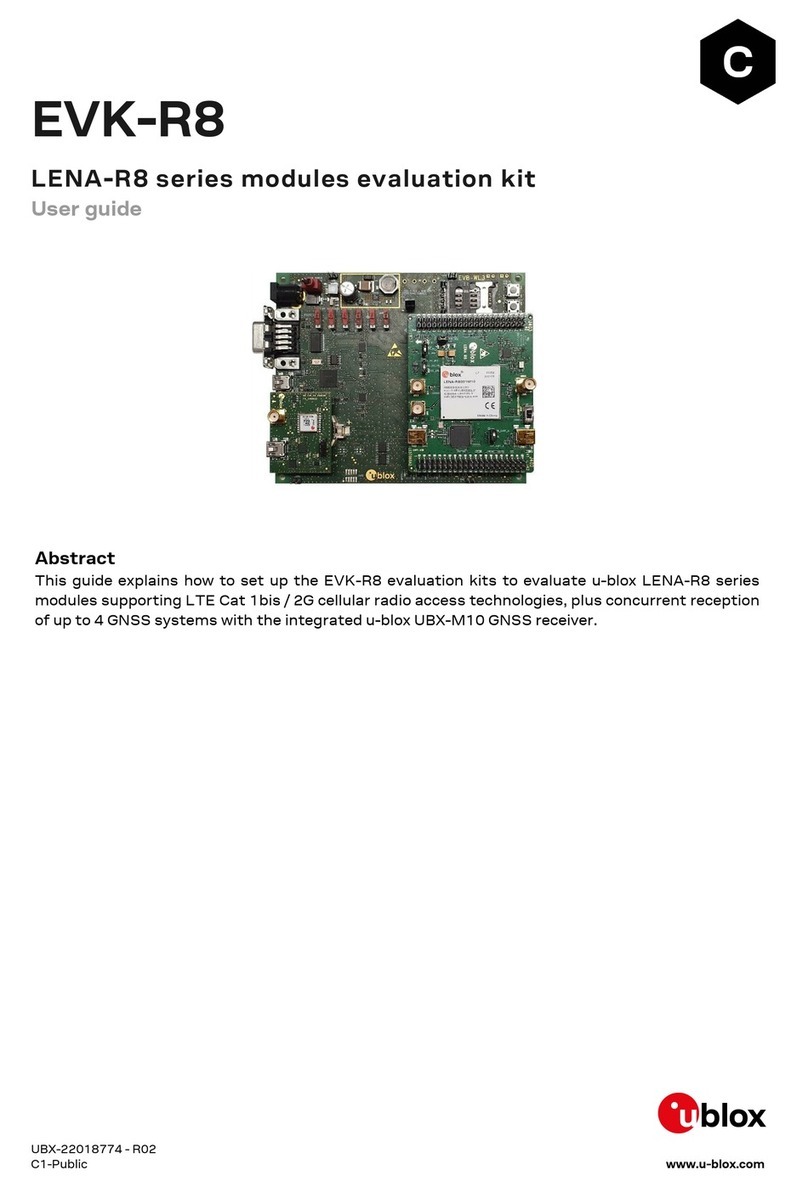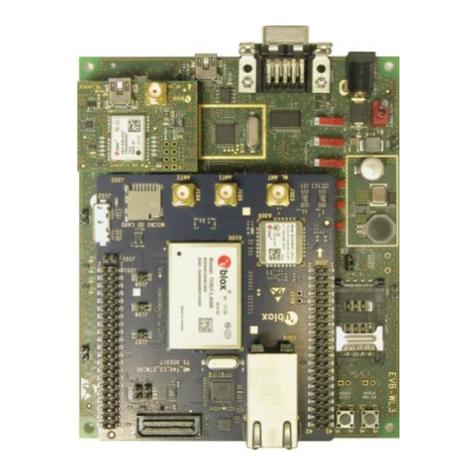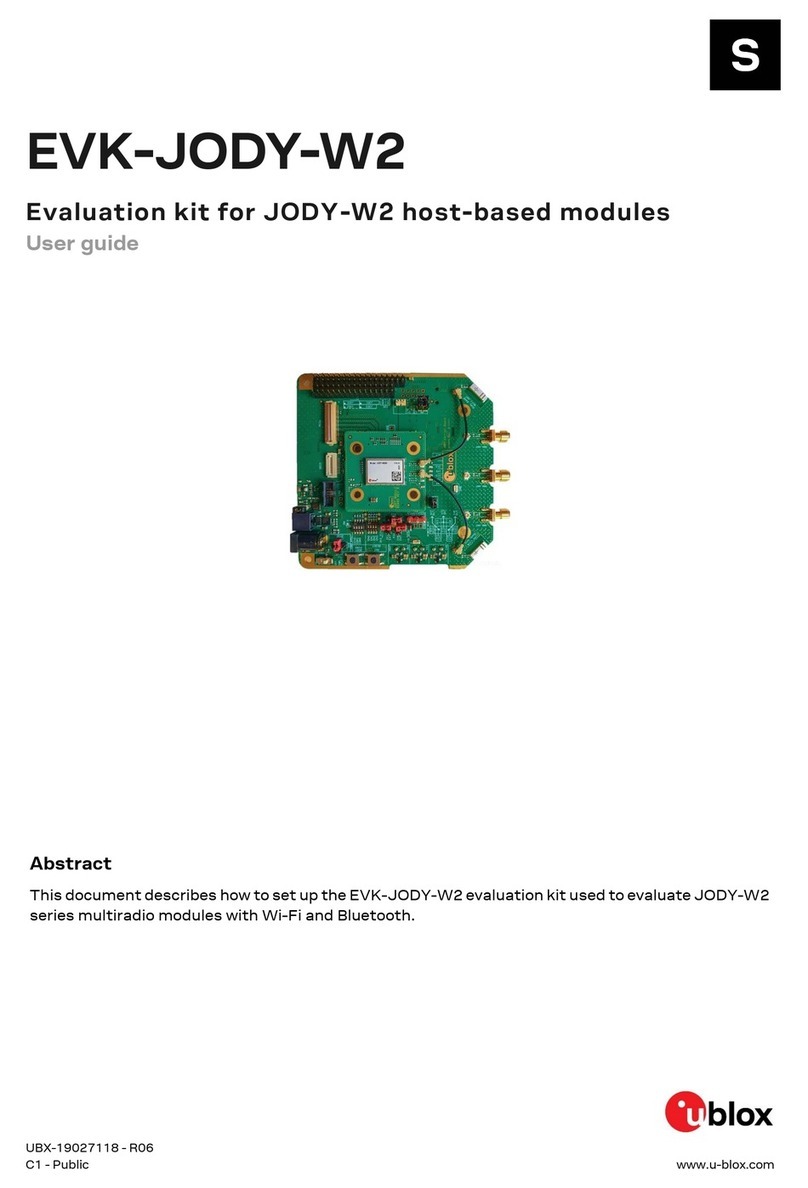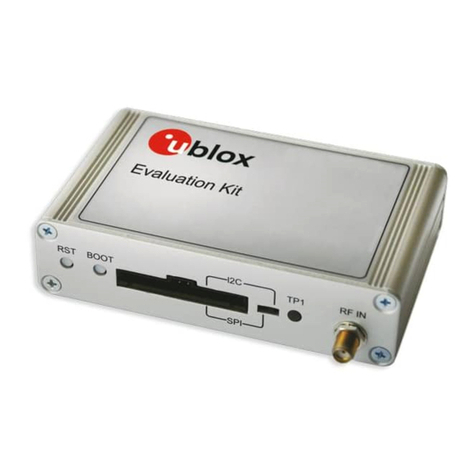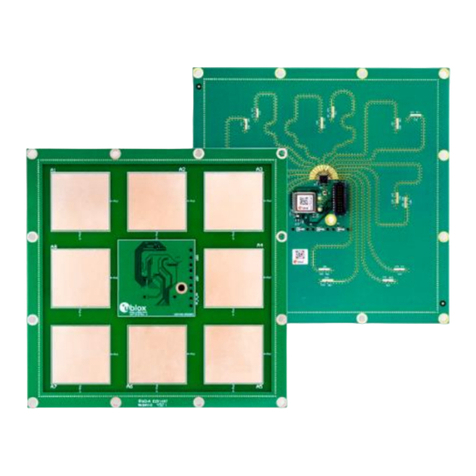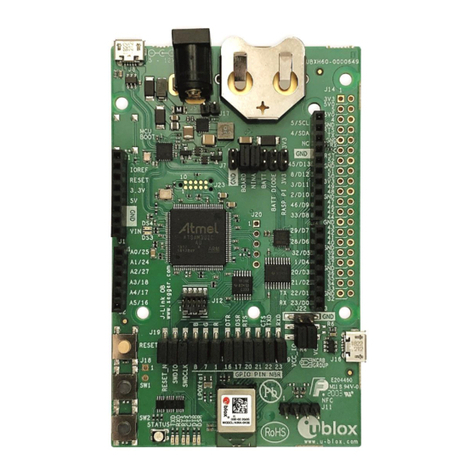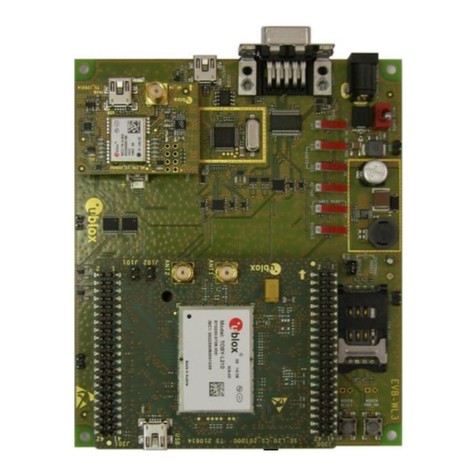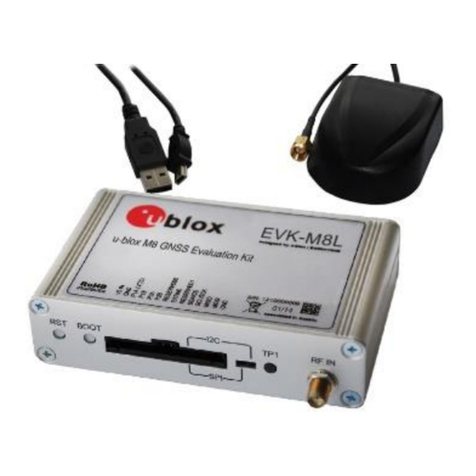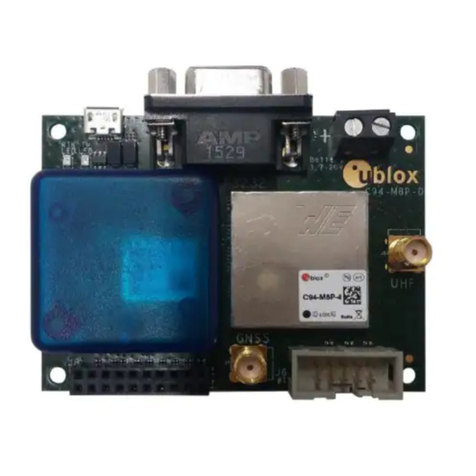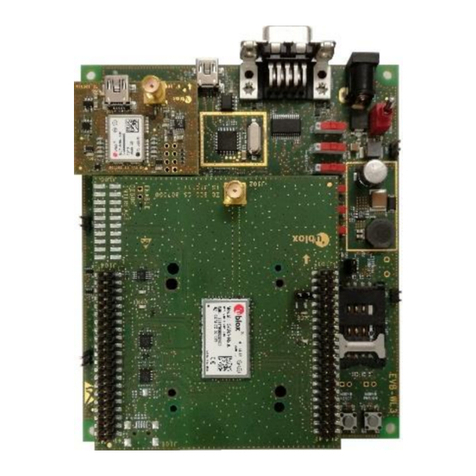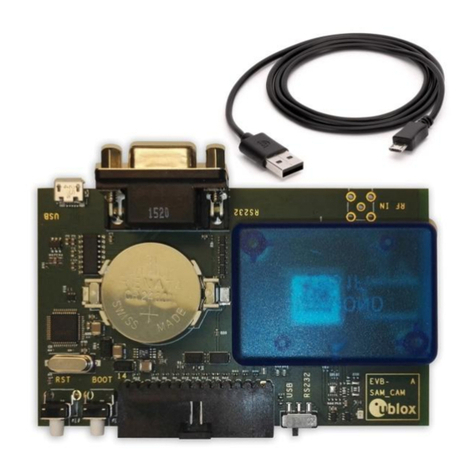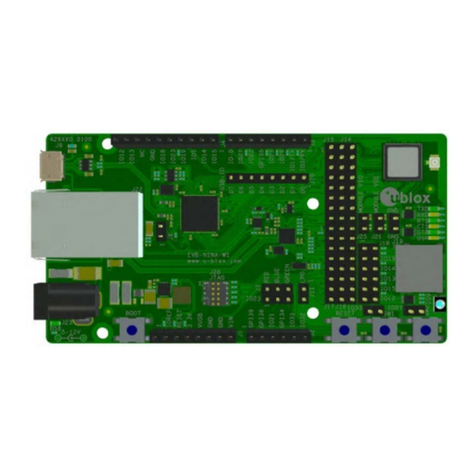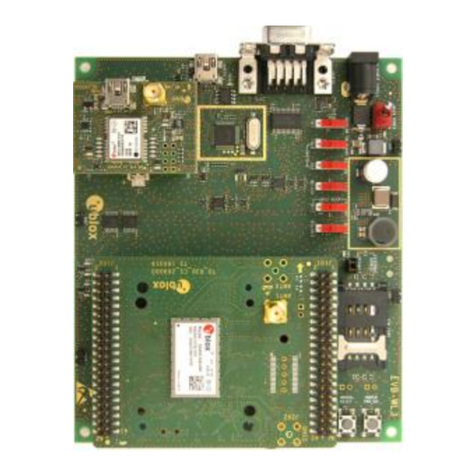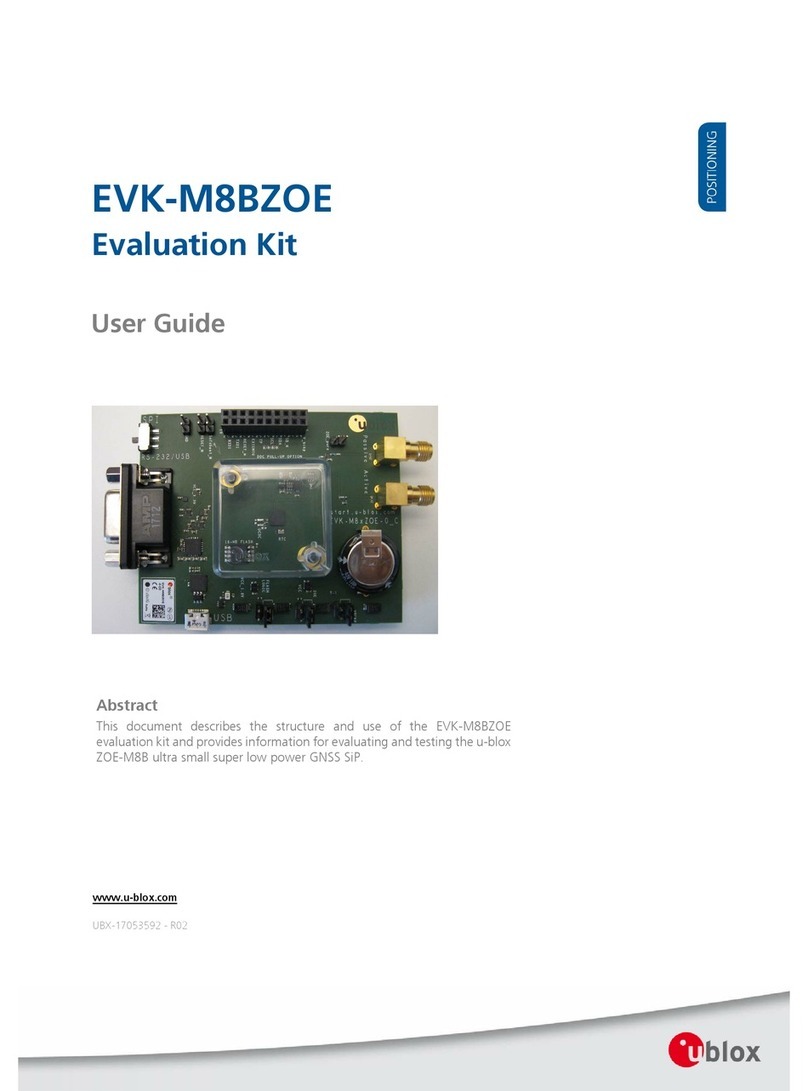EVK-NORA-W1 - User guide
UBX-22002764 - R01 Contents Page 3 of 22
C1-Public
Contents
Document information................................................................................................................................2
Contents ..........................................................................................................................................................3
1Product description ..............................................................................................................................4
1.1 Key features .................................................................................................................................................4
1.2 Items included in kit.................................................................................................................................... 5
1.2.1 EVK-NORA-W101 kit contents........................................................................................................5
1.2.2 EVK-NORA-W106 kit contents........................................................................................................5
2Setting up the evaluation board.......................................................................................................6
3Hardware description...........................................................................................................................7
3.1 Power .............................................................................................................................................................7
3.1.1 Powering the board ............................................................................................................................7
3.2 Reset..............................................................................................................................................................8
3.3 Buttons..........................................................................................................................................................9
3.4 LEDs.............................................................................................................................................................10
3.5 Serial communication ..............................................................................................................................11
3.6 32.768 kHz low frequency clock.............................................................................................................12
3.7 Current sensing headers .........................................................................................................................13
3.8 External JTAG debug interface..............................................................................................................14
3.9 QSPI .............................................................................................................................................................15
3.10 GPIO jumpers .............................................................................................................................................16
3.11 Header pin-out ...........................................................................................................................................17
Appendix ....................................................................................................................................................... 20
AGlossary ................................................................................................................................................. 20
Related documentation ........................................................................................................................... 21
Revision history.......................................................................................................................................... 21
Contact.......................................................................................................................................................... 22
